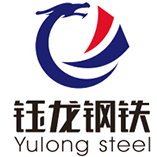-
Cangzhou Yulong Steel Co., Ltd.
-
Phone:
+86 13303177267 -
Email:
admin@ylsteelfittings.com
- English
- Arabic
- Italian
- Spanish
- Portuguese
- German
- kazakh
- Persian
- Greek
- French
- Russian
- Polish
- Thai
- Indonesian
- Vietnamese
- Zulu
- Korean
- Uzbek
- Hindi
- Serbian
- Malay
- Ukrainian
- Gujarati
- Haitian Creole
- hausa
- hawaiian
- Hebrew
- Miao
- Hungarian
- Icelandic
- igbo
- irish
- Japanese
- Javanese
- Kannada
- Khmer
- Rwandese
- Afrikaans
- Albanian
- Amharic
- Armenian
- Azerbaijani
- Basque
- Belarusian
- Bengali
- Bosnian
- Bulgarian
- Catalan
- Cebuano
- China
- China (Taiwan)
- Corsican
- Croatian
- Czech
- Danish
- Esperanto
- Estonian
- Finnish
- Frisian
- Galician
- Georgian
- Kurdish
- Kyrgyz
- Lao
- Latin
- Latvian
- Lithuanian
- Luxembourgish
- Macedonian
- Malgashi
- Malayalam
- Maltese
- Maori
- Marathi
- Mongolian
- Myanmar
- Nepali
- Norwegian
- Norwegian
- Occitan
- Pashto
- Dutch
- Punjabi
- Romanian
- Samoan
- Scottish Gaelic
- Sesotho
- Shona
- Sindhi
- Sinhala
- Slovak
- Slovenian
- Somali
- Sundanese
- Swahili
- Swedish
- Tagalog
- Tajik
- Tamil
- Tatar
- Telugu
- Turkish
- Turkmen
- Urdu
- Uighur
- Welsh
- Bantu
- Yiddish
- Yoruba

Ліст . 19, 2024 07:19 Back to list
Exploring the Benefits and Applications of Butt Welded Joints in Construction and Manufacturing
Understanding Buttwelded Connections A Comprehensive Overview
Buttwelding is a popular method in various industries to create strong, durable joints between metal pieces. This welding technique is essential in pipeline construction, manufacturing, and structural applications. Understanding buttwelded connections is crucial for engineers, manufacturers, and anyone involved in metalworking.
What is Buttwelding?
Buttwelding refers to the process of joining two pieces of metal together by aligning their edges and applying heat and pressure to form a solid connection. This technique typically uses a filler material to facilitate the welding process, although in many cases, especially in thicker materials, the edges of the base metals may be melted together directly. The most common equipment used for buttwelding includes electric arc welders and gas welding torches.
Buttwelding can be applied to various types of metals, including carbon steel, stainless steel, aluminum, and other alloys. The versatility and strength of buttwelded joints make them suitable for high-stress applications in industries such as oil and gas, construction, and transportation.
The Buttwelding Process
The buttwelding process begins with preparing the metal surfaces to be joined. This involves cleaning the edges to remove any contamination like rust, grease, or dirt. Proper surface preparation is crucial to ensure a strong and defect-free weld. Once prepared, the metal pieces are aligned precisely and held in place, often with the aid of fixtures or clamps.
Next, the welding equipment is set up. Depending on the materials and thickness, parameters such as voltage, amperage, and welding speed are adjusted. The welder then initiates the arc, creating heat that melts the edges of the metal pieces. If a filler material is used, it is added to the molten pool to reinforce the joint.
As the weld cools, it solidifies and forms a continuous bond between the two pieces. The final step often involves inspecting the weld for defects or inconsistencies. Techniques such as non-destructive testing (NDT), including ultrasonic testing or radiographic inspections, may be employed to ensure the integrity of the joint.
buttwelded

Advantages of Buttwelding
One of the primary advantages of buttwelding is its ability to create strong, seamless joints that can withstand significant stress and pressure. Buttwelded joints tend to have higher strength and durability compared to other welding methods, making them ideal for high-pressure applications such as pipelines and pressure vessels.
Additionally, buttwelding allows for a clean and smooth finish, which is particularly important in industries where aesthetics and hygiene are critical, such as food processing and pharmaceuticals. The lack of gaps in buttwelded joints minimizes the likelihood of leaks, making it a preferred choice for fluid and gas systems.
Moreover, buttwelding is a cost-effective method for joining metals. Although the initial investment in equipment and training may be high, the long-term benefits, including reduced maintenance and repair costs, often outweigh these initial expenses.
Challenges and Considerations
Despite its many advantages, buttwelding is not without its challenges. The process requires skilled welders to ensure proper technique and quality control. Factors such as overheating, incorrect settings, or poor surface preparation can lead to weld defects, including cracks, porosity, or incomplete fusion.
Another consideration is the material compatibility. Different metals have varying properties, and when joining dissimilar metals, careful attention must be paid to the welding parameters to avoid potential issues like corrosion or brittle intermetallic phases.
Conclusion
Buttwelding is an essential technology in modern manufacturing and construction, providing strong, reliable connections for a wide range of applications. With proper training, equipment, and quality control, buttwelded joints can serve as the backbone of many structural and mechanical systems, delivering performance and safety in demanding environments. As industries continue to evolve and innovate, the importance of mastering buttwelding techniques cannot be overstated, making it a vital skill for the future of metalworking. Understanding the intricacies of this process helps ensure that engineers and fabricators can leverage its strengths effectively while navigating its challenges.
Latest news
-
ANSI 150P SS304 SO FLANGE
NewsFeb.14,2025
-
ASTM A333GR6 STEEL PIPE
NewsJan.20,2025
-
ANSI B16.5 WELDING NECK FLANGE
NewsJan.15,2026
-
ANSI B16.5 SLIP-ON FLANGE
NewsApr.19,2024
-
SABS 1123 FLANGE
NewsJan.15,2025
-
DIN86044 PLATE FLANGE
NewsApr.19,2024
-
DIN2527 BLIND FLANGE
NewsApr.12,2024
-
JIS B2311 Butt-Welding Fittings LR/SR 45°/90° /180°Seamless/Weld
NewsApr.23,2024











